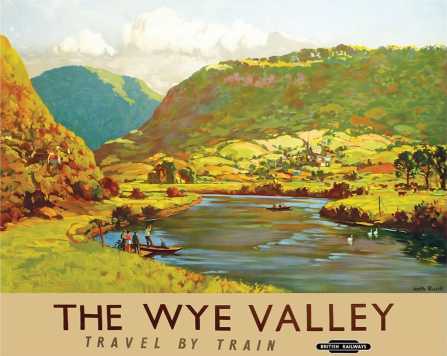
It is over 100 years since the only railway in the parish of Penallt opened in October 1876 – although there was no station in the parish until the halt near the Boat Inn was opened in 1937. Until then the station at Redbrook had to serve the parish. (Incidentally, this station was one of the very few on the line which were actually in or adjacent to the places from which they took their names – think of Monmouth, at Troy; St Briavels, by Bigsweir Bridge; Tintern, way out in the fields to the north.) The line from Monmouth to Chepstow was the third of the four lines which for a few decades made Monmouth almost a railway centre. The line to Usk had been opened in 1857, that to Ross in 1873, and the Coleford line was opened in 1883. The Ross and Chepstow lines together made what must have been one of the most scenic and romantic railway routes in Britain. The final closure in 1964 was perhaps just too early to attract a railway preservation society. Winding through gorges and tunnels and over bridges, the line as a tourist attraction would surely have done as well as the North Yorkshire Moors Railway.
The railway affected the economy of our parish in only minor ways. It came too late to assist the paper manufactories in Whitebrook; they were dead or moribund by 1876, although this did not prevent the inhabitants from presenting a petition to the Railway Company in November 1876 urging the need for a station at Whitebrook to serve the industry. Whitebrook never had a proper station, and got its little halt only in 1927. The railway did provide employment for some of the inhabitants of Penallt, but this did not compensate for the loss of the river transport which was destroyed by the coming of the railway.

It is worth mentioning that Penallt nearly got a railway which would have served its industrial needs at a much earlier period, around 1810. The Monmouth Railway Company was incorporated by Act of Parliament in that year, and the deposited plans showed not only the line from Howlers Slade (in the Forest of Dean) through Redbrook to Monmouth (which was actually built and opened for horse-drawn traffic), but also a branch from Redbrook to “Pool Dee on Penallt Common”.
This line would have gone up on a gradient of about 1 in 7 past Glyn Farm to serve the old millstone quarries. There could have been very little material carted up this steep gradient, and the purpose of the branch was presumably to take out millstones and other dressed stone. It is hard to see how it could have paid its way, and it is not surprising that it was not built. In the draft plan, a branch from Redbrook to Whitebrook was proposed, with a terminus at the paper mill at what is now called Traligael, but this was not included in the Act. Nevertheless, the width and regular gradient of the track on the north bank of the White Brook suggests that preliminary work was done for the laying of this line.
So, Penallt does have some railway history!
More on the Penallt Viaduct here.
[from: Penallt – A Village Miscellany]